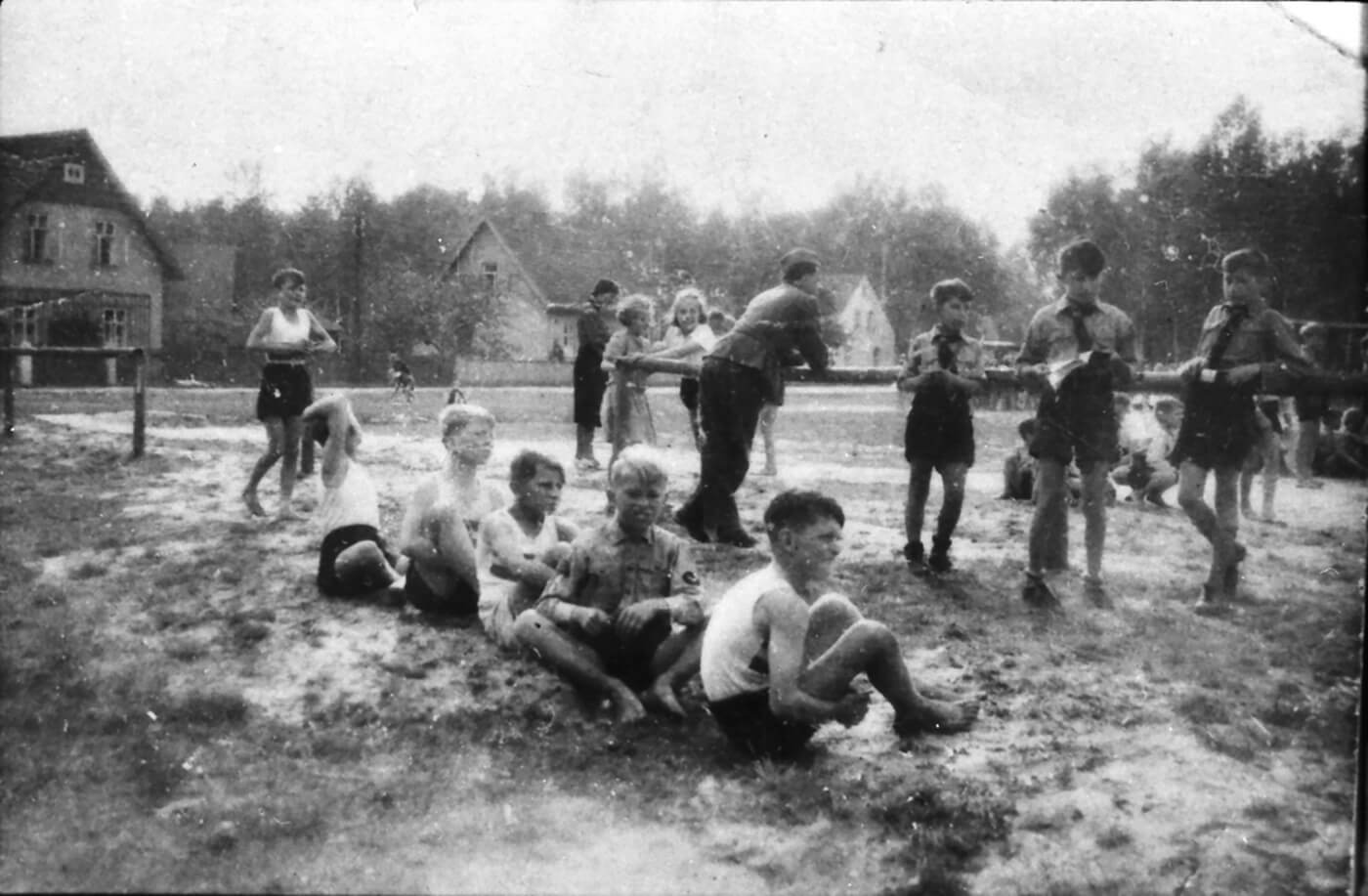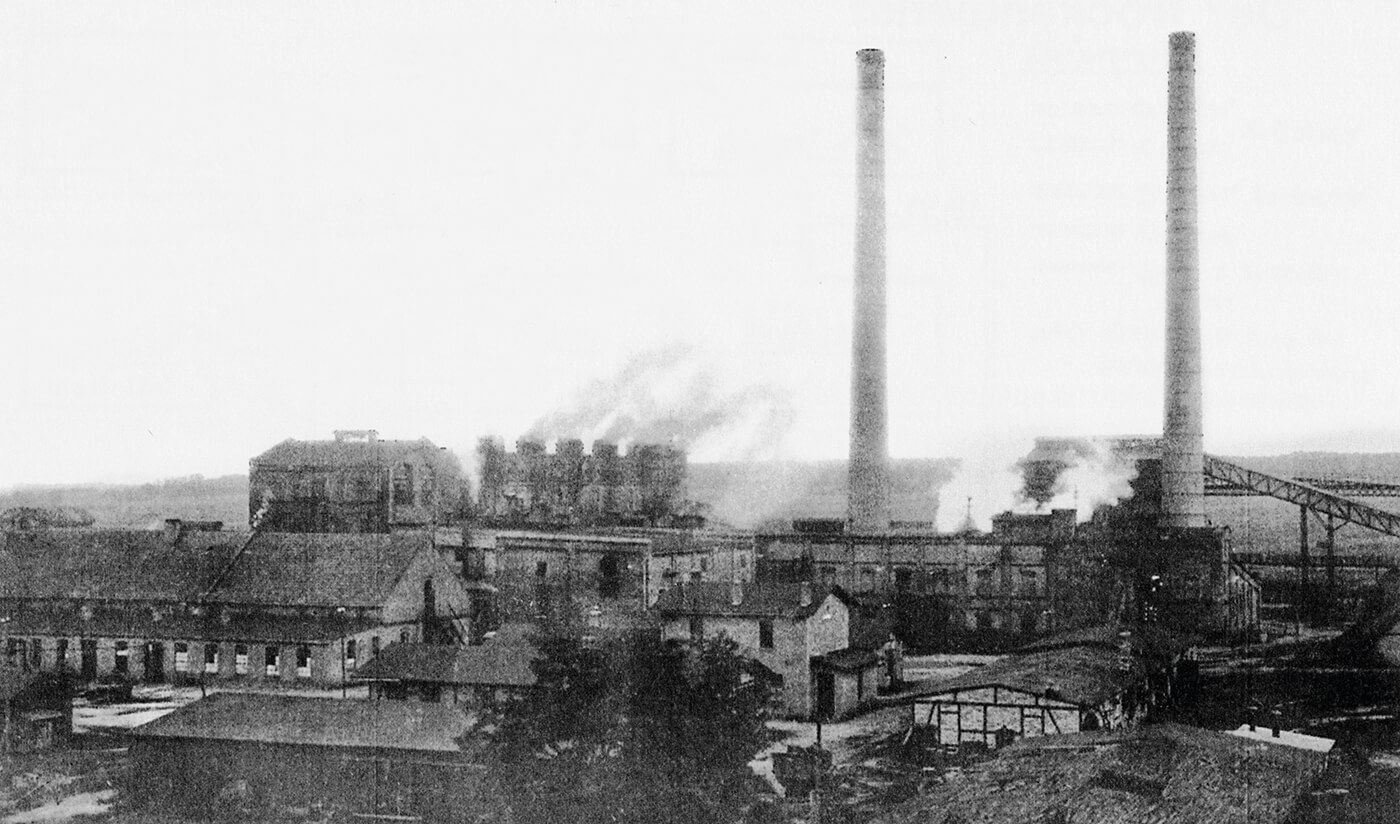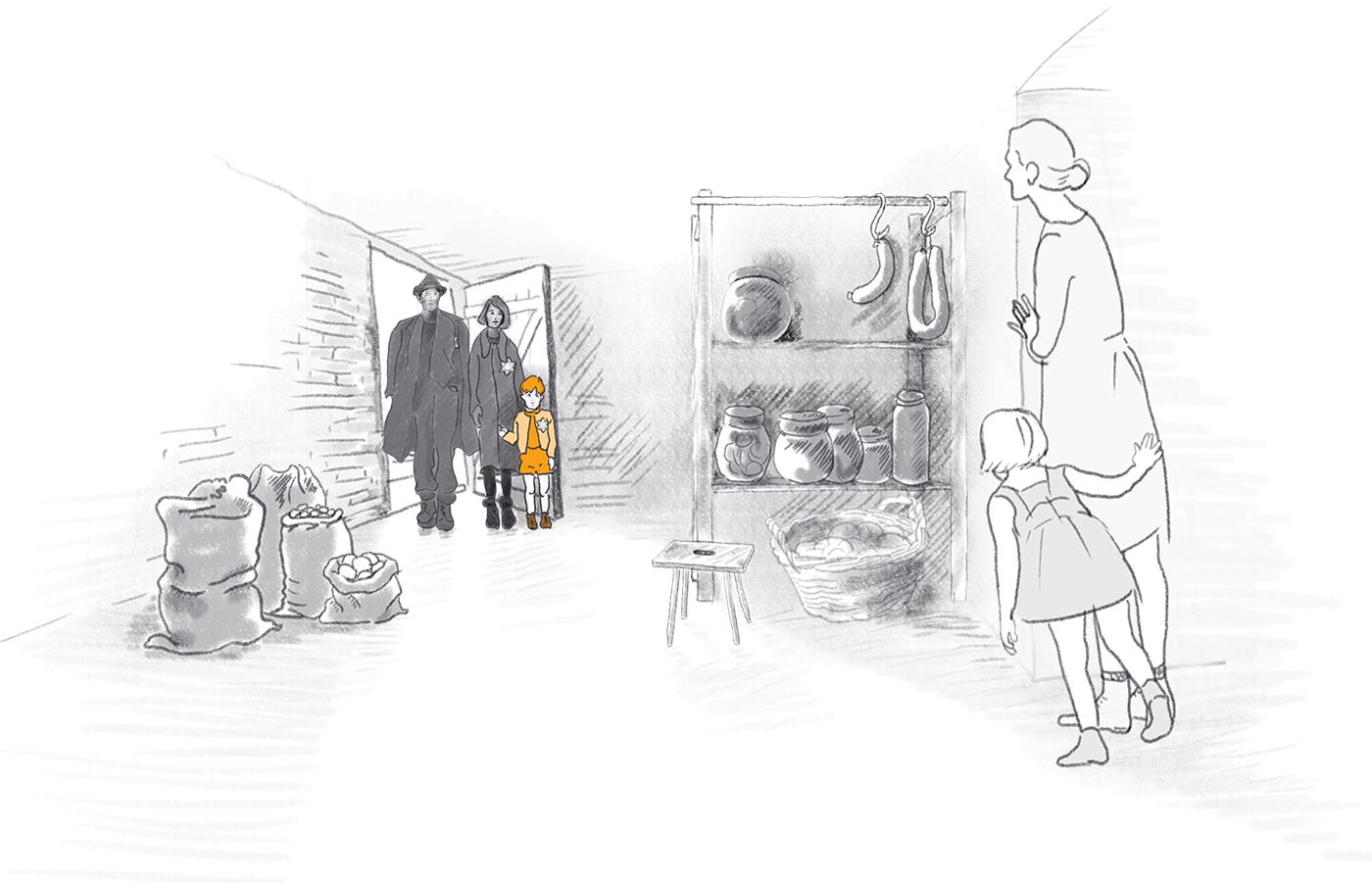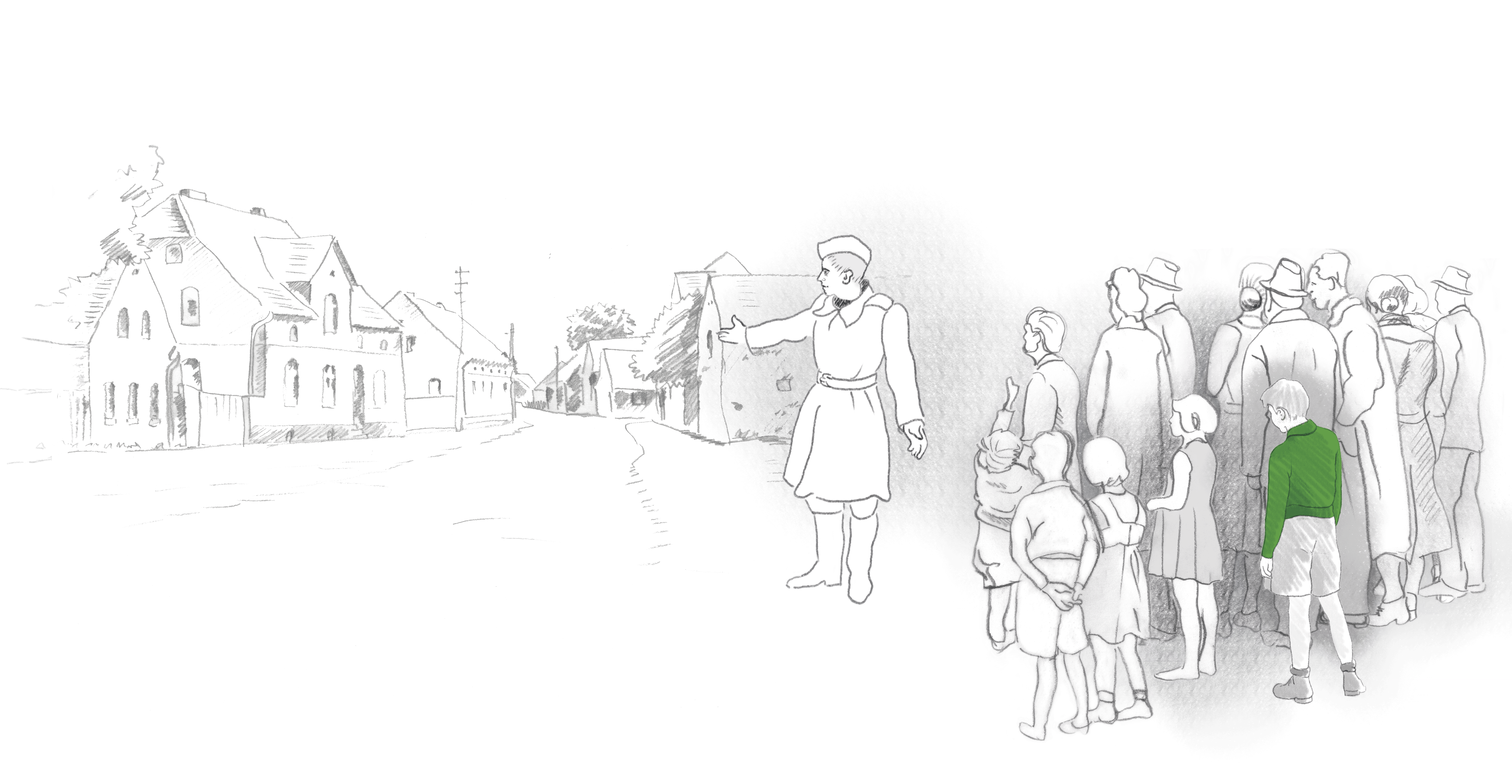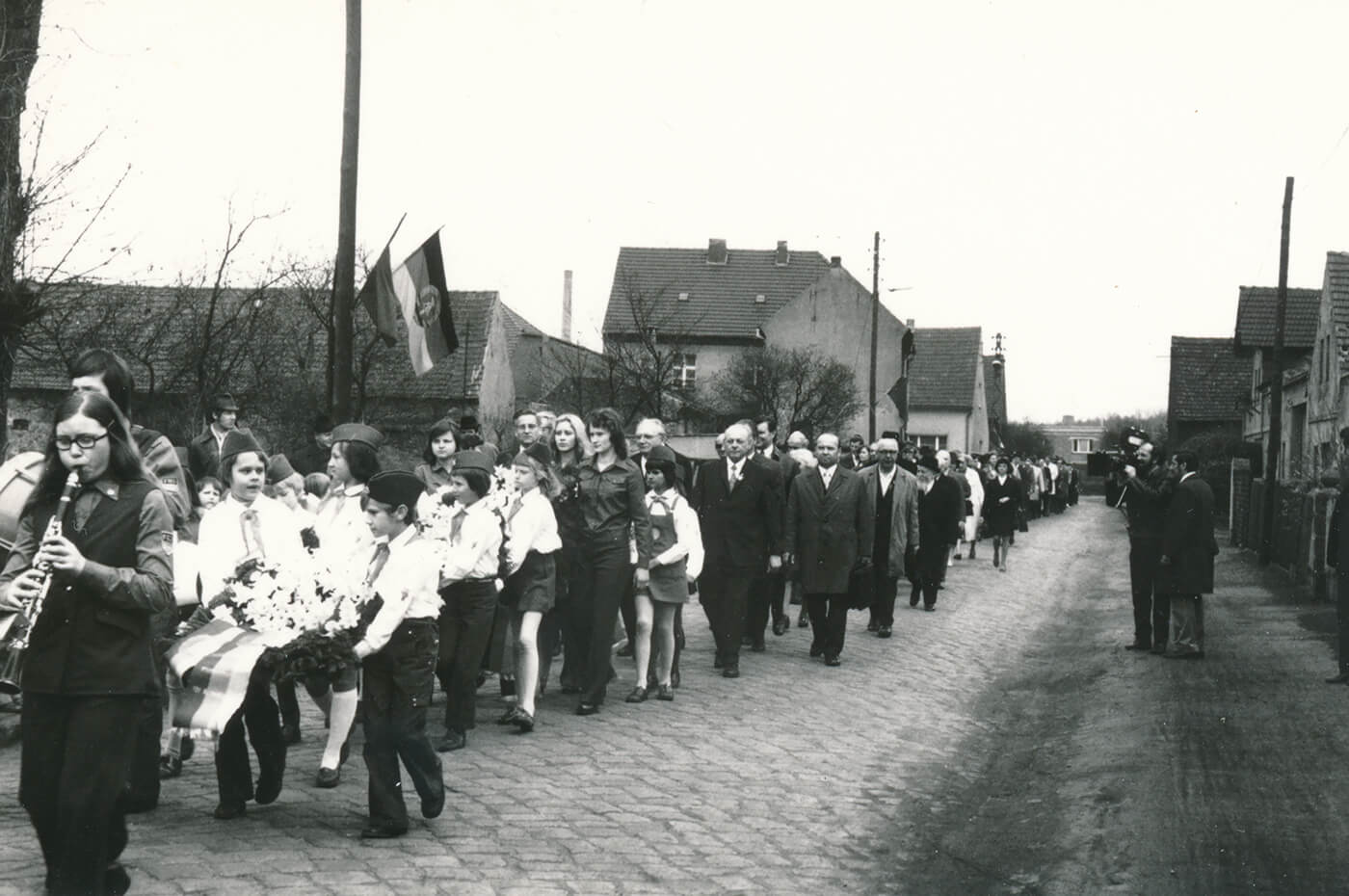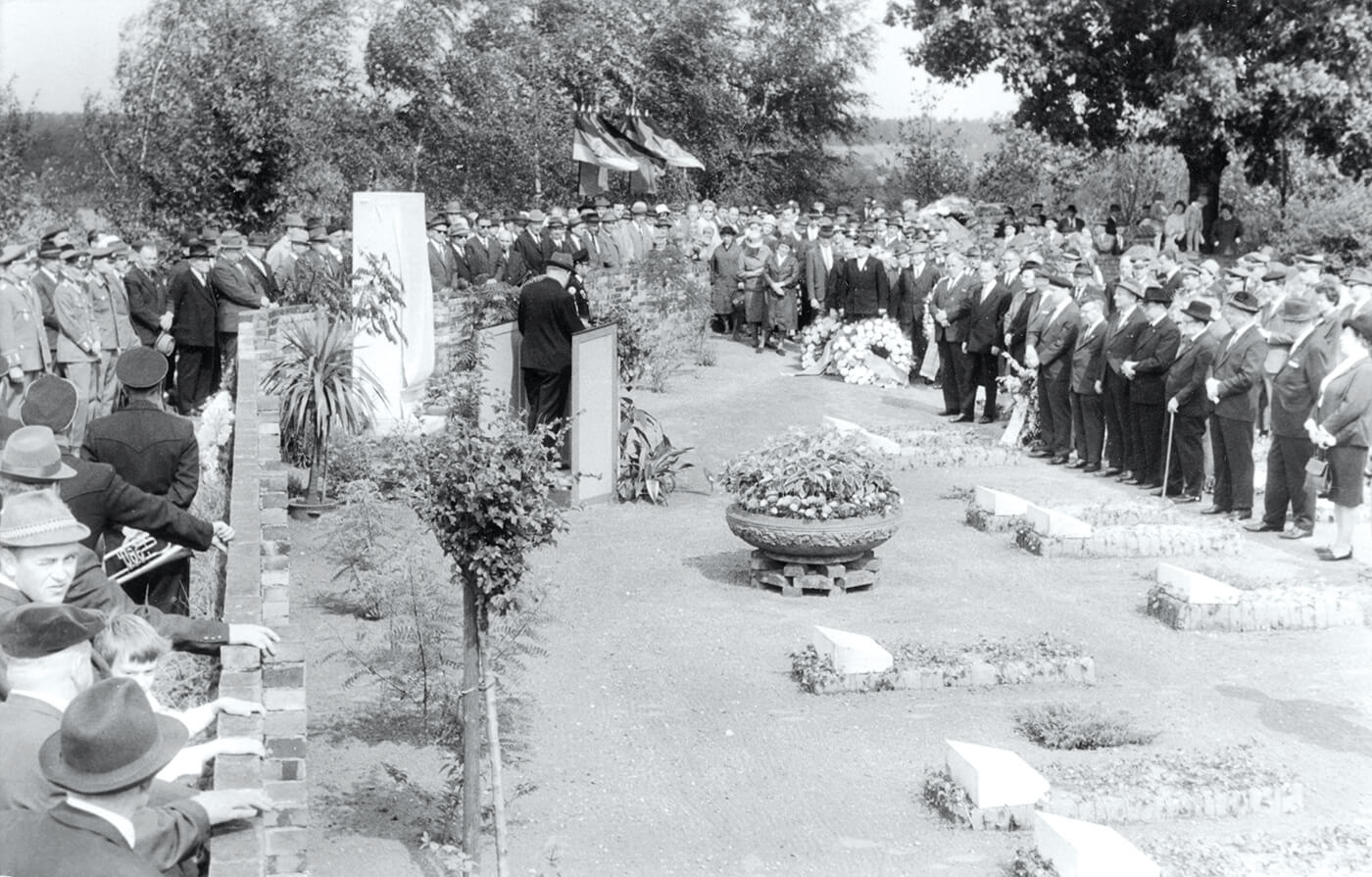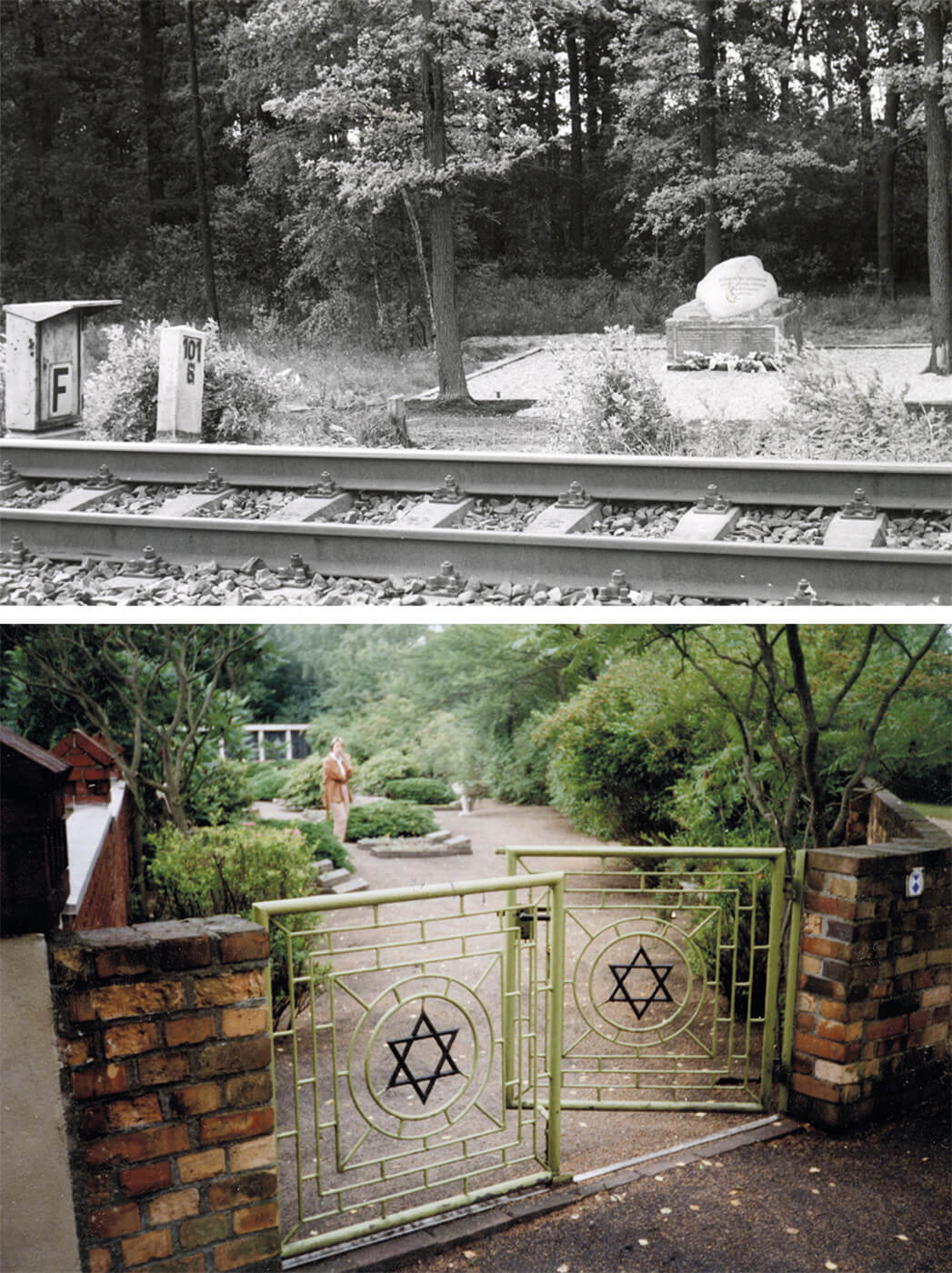Tröbitz – A village like any other?
Tröbitz under National Socialism 1933–1945
In election district 5, to which Tröbitz belonged, the National Socialists remained the strongest party in the 1932 Reichstag elections, with 48.1 % in July and 42.6 % in November. In the mining village Tröbitz, by contrast, two-thirds still voted social-democratic in the regional Landtag elections in March 1933. By 1945 around 40 Tröbitzers had joined the NSDAP, two of them even the SS. After the beginning of the war in 1939, most of the men were drafted into the Wehrmacht. Forced laborers, men and women, from Poland and Ukraine worked in the Hansa mine and on the farms. In the final months of the war, Germans fleeing from the Red Army came from the east to Tröbitz. Because members of the Hitler Youth had blown up the railroad bridge over the Elster, the "Lost Transport" came to a halt in Tröbitz.
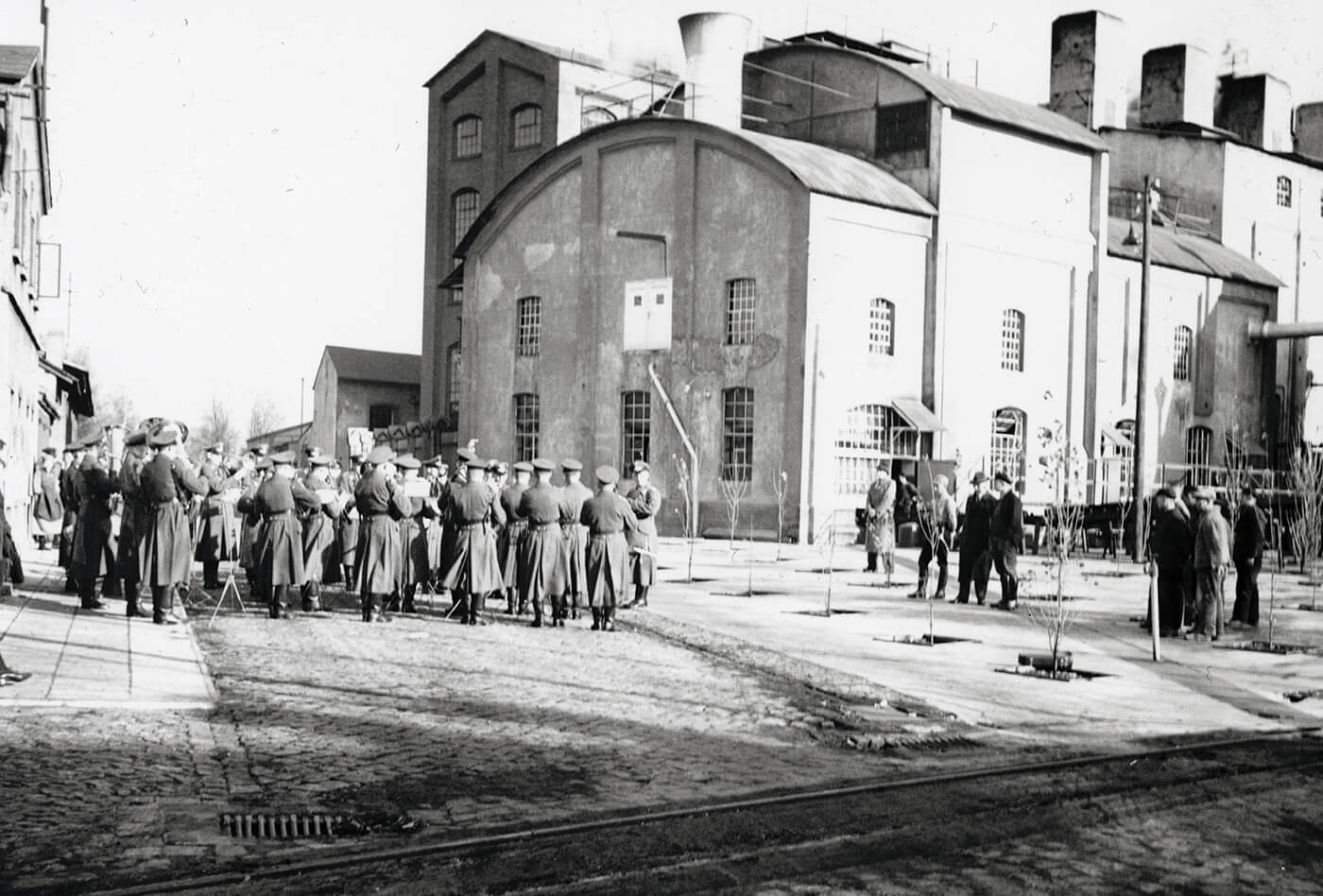
The “Louise” briquette factory was owned by the Jewish entrepreneur Ignatz Petschek, who died in 1934. In 1939 the Nazis forced the heirs to sell the factory at a price far below its fair value. At first it was taken over by the state-run Göring Works later by a company owned by the industrialist Friedrich Flick.
After the Nazis took power in 1933, political dissidents, Jews, social outcasts and other minorities such as the Sorbs were persecuted in the Lausitz. During the Second World War numerous people from Western and Eastern Europe were forced to work in the factories, in agriculture, and in the brown coal industry in the Lausitz region. The brown coal that was mined there and converted into gasoline for the Wehrmacht was particularly important for the war effort.
"The Russians gave us the village as a present."
Micha Gelber, in 1945 nine years old, 2001
The Red Army and the liberation in 1945
Soldiers from the First Ukrainian Front arrived in Tröbitz shortly after the "Lost Transport". These units of the Red Army took control and established a military hospital in the village. Some of the Germans committed suicide. Women and girls went into hiding for fear of the soldiers. Many inhabitants reacted with mixed feelings towards the "Lost Transport". They saw the people from the train as foreigners with whom they had to share their supplies. At times more survivors than local inhabitants were living in Tröbitz and neighboring towns.
"The Soviet soldiers told us to go into the houses. We found various kinds of food in the cellars. This included bacon and other things that were hard to digest. That cost us a few lives, because it was not so easy to eat after the imprisonment."
Raul Teitelbaum, in 1945 fourteen years old, 2002
"… I can also remember how the train was pulled back to Tröbitz, and then everybody ran out of the train to search for a house, because the Russians had given us the village."
Micha Gelber, 2001
Around 2,300 Jewish survivors, mostly women and children, came together with around 500 inhabitants of Tröbitz.
The "Lost Transport" | Video 12 min
"I want to express my thanks to the people of Tröbitz …"
Sonni Schey, née Birnbaum, in April 1945 sixteen years old, 1995
In Memory of the Lost Transport
The Jewish cemetery and the first memorial stones were erected thanks to the initiative of Jewish survivors. The community later expanded the Jewish cemetery, which was officially dedicated in 1966. Inhabitants from Tröbitzand environs still take care of the memorial sites. Commemorations have been taking place regularly since the 1970s.
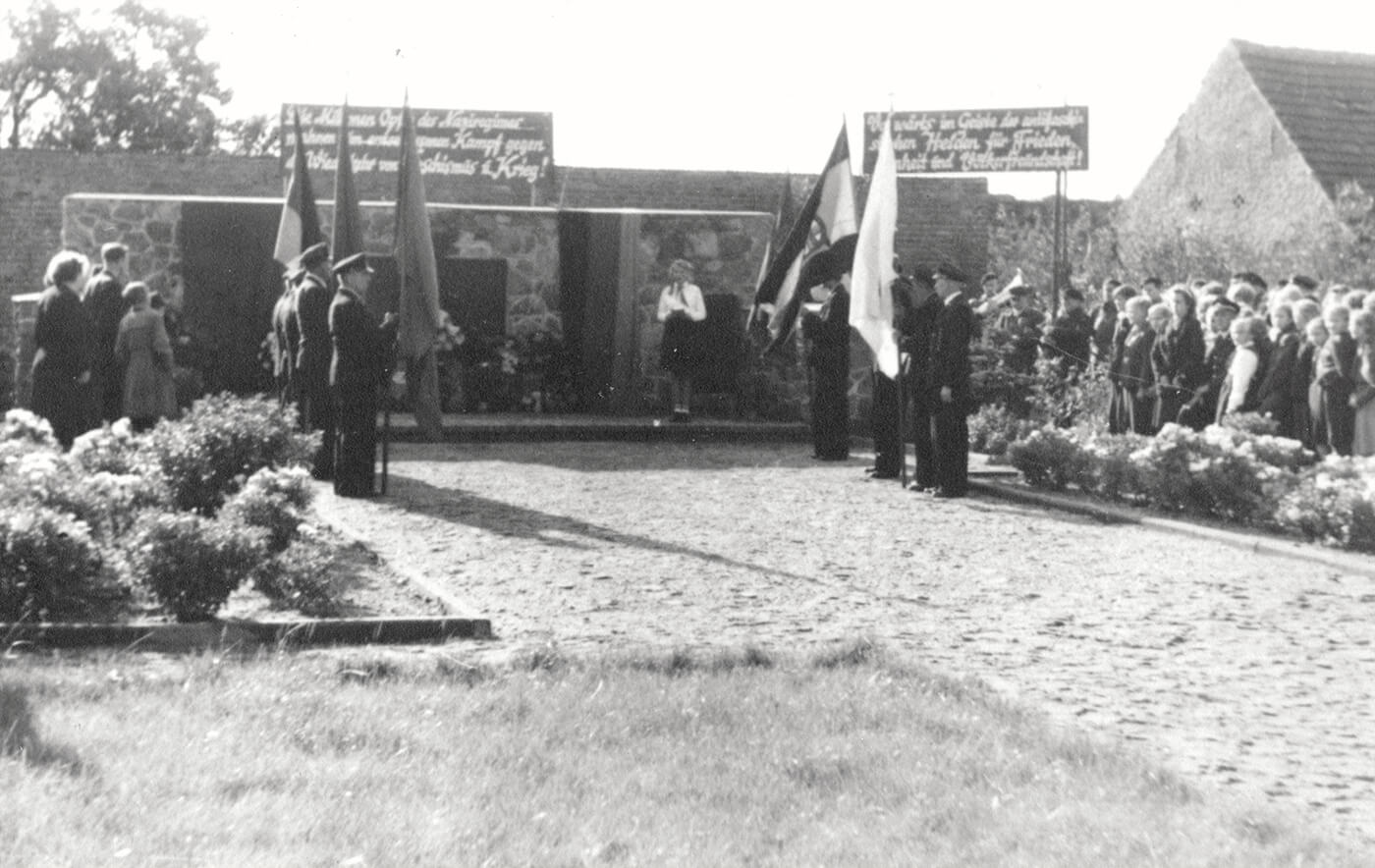
For a long time there was no indication that the victims buried next to the Protestant church consisted largely of Jews. The 26 non-Jewish inhabitants of Tröbitz who died of typhus are also buried there.
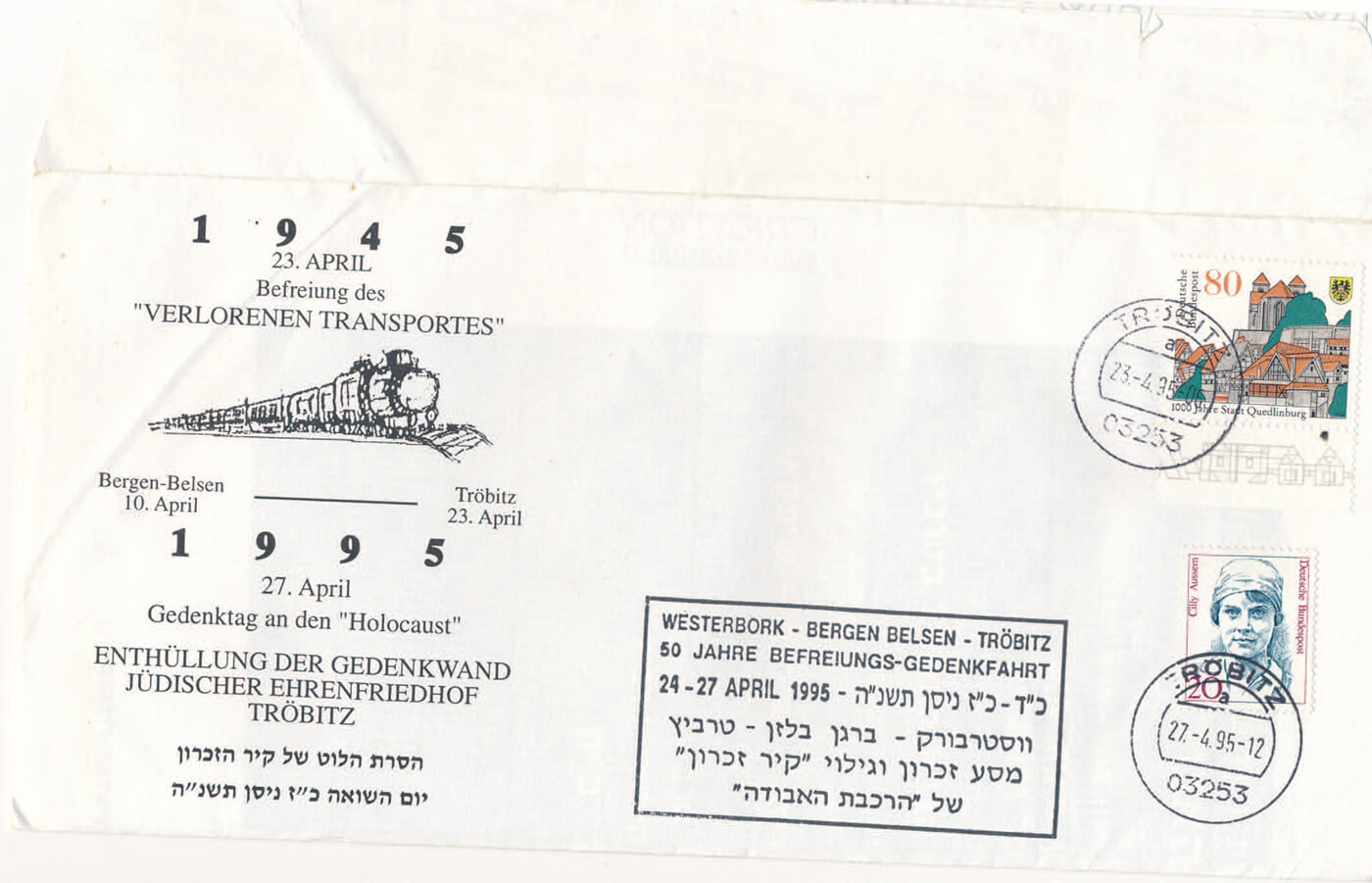
Many of the survivors of the “Lost Transport” and their relatives also came to Tröbitz.
Envelope of the invitation in 1995
